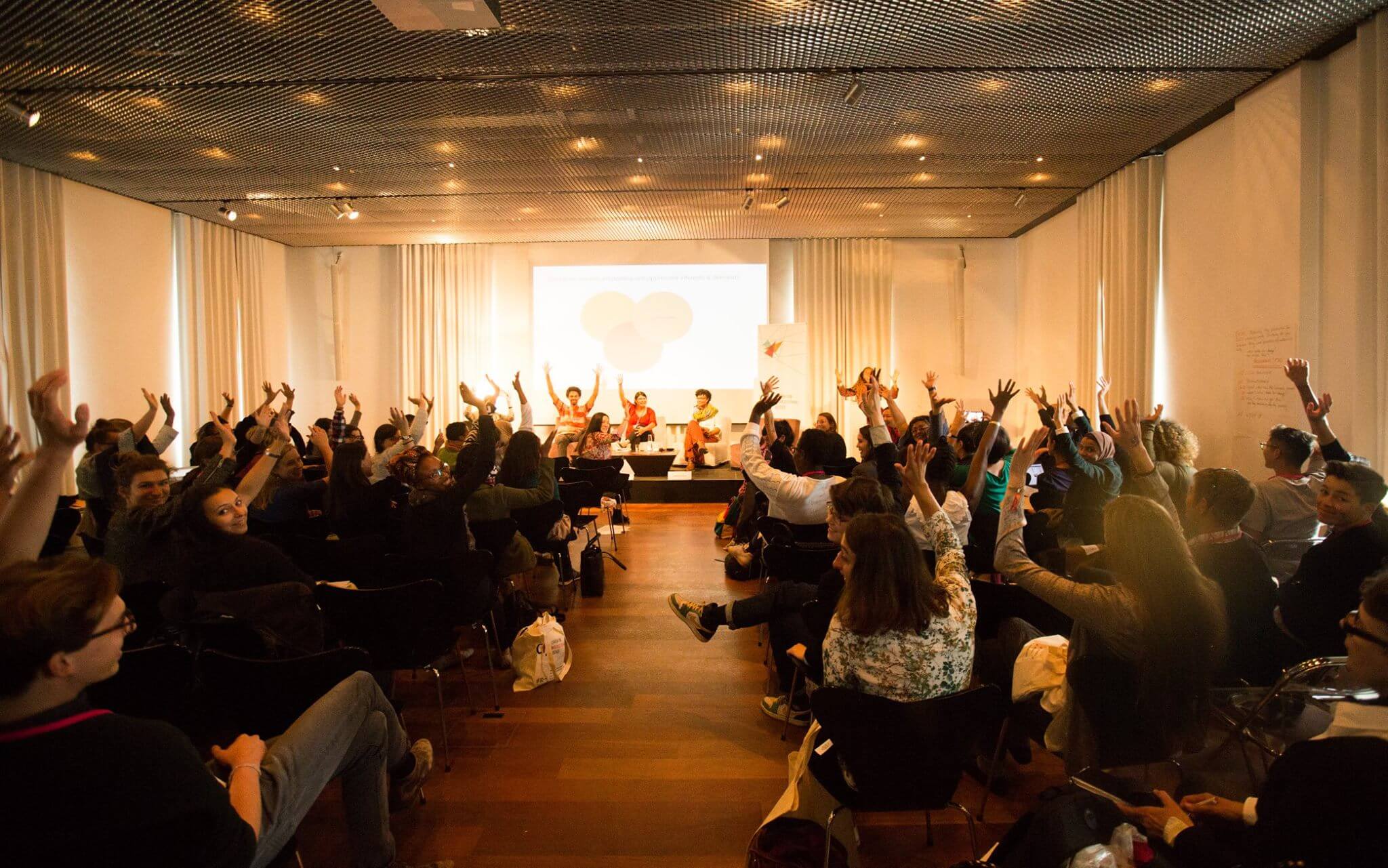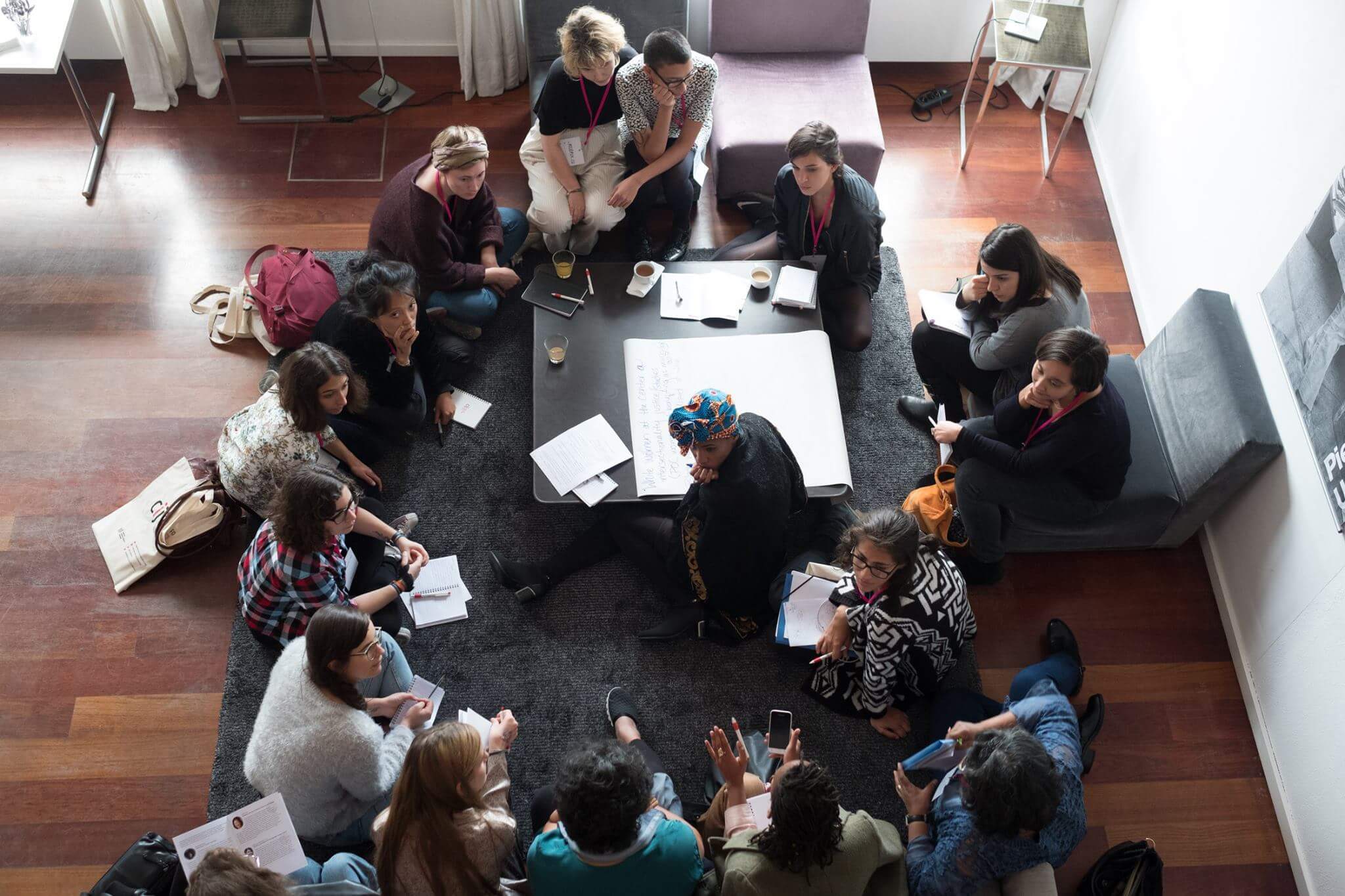This interview was first published on the Spanish magazine CTXT.
Emilia Roig is the founder and executive director of the Berlin-based Centre for Intersectional Justice. The CIJ advocates for effective and inclusive anti-discrimination policies in order to address structural inequalities in Europe. Roig holds a PhD in Political Science from Humboldt University and Sciences Po Lyon. Her doctoral research analysed intersectional discrimination in the French and German labor markets for care and household services.
1) How has the response to intersectionality been in Germany?
Intersectionality has been very well received in Germany, but it remained concentrated in academic spheres until recently and underwent a process of depoliticisation. Sirma Bilge spoke about the whitening of intersectionality in her article “Whitening Intersectionality. Evanescence of Race in Intersectionality Scholarship.”
In Germany, race is routinely erased from the discourse on intersectionality.
This definitely applies to Germany, where race is routinely erased from the discourse on intersectionality. A systemic and structural understanding of discrimination and inequality is missing and it widely affects the way intersectionality is deployed in academic and institutional spheres alike.
2) What are some of the largest obstacles to implementing intersectional policies at an institutional level? At a grassroots level?
The largest obstacle we face in the German context regarding the implementation of an intersectional approach in policymaking is the lack of available data on intersectional discrimination, especially on racial discrimination. The proxies currently used to quantify race-based discrimination fail to capture the extent of the problem. For example, the category “with a migration background” says too little about whether a person is affected by racism or not.
The largest obstacle we face in the German context in policymaking is the lack of available data on intersectional discrimination, especially on racial discrimination.
A white Austrian will enter this category but is by no means affected by systemic racism. Similarly, a Black German born to German parents and grandparents will not be captured by this statistical category. Another major obstacle to the implementation of intersectionality is the perceived complexity of this concept which, many assume, is too difficult to implement. So we need to broaden the knowledge base on intersectionality and provide concrete ways to implement this concept.

Intersectionality can survive its complexity because society is complex, but nevertheless graspable. Anti-discrimination work without intersectionality is bound to fail in the long run. Grassroots groups are increasingly reclaiming the concept of intersectionality but this process of reclaiming is difficult because larger institutions, even in civil society, are co-opting the term and sometimes self-proclaim themselves as intersectional when, in fact, they are not. It’s all about repoliticising intersectionality and refilling it with its rich substance of subversiveness and transformative power.
3) What do you see as the future of intersectionality? What would truly intersectional institutions and movements look like?
Intersectionality is growing and expanding every day, so I don’t see a future without it. Converging social justice movements and demands is absolutely necessary in the face of current political forces driving division, fear and exclusion. Systemic racism is rising, as are sexism, homophobia and class divides.

We can only move forward if we understand how truly mutually reinforcing these historical, political and economic systems are. Patriarchy, racism, colonialism and capitalism all rest on the hierarchisation, classification and domination of categories of human beings based on social and historical constructs.
Patriarchy, racism, colonialism and capitalism all rest on the hierarchisation, classification and domination of categories of human beings based on social and historical constructs.
Intersectionality tells us that fighting sexism and homophobia with racism, for example by saying that “we need to protect our women from Muslim men” or “migrant communities are inherently homophobic” will lead to increased polarisation between groups and will by no means solve the problem; neither sexism nor homophobia. Truly intersectional movements embrace differences within themselves and promote a systemic understanding of oppression, inequalities and discrimination. Intersectional movements move beyond a single-axis analysis of social problems and make sure that the feminist movement is inclusive of all women*, that the movement for ethnic and racial diversity is inclusive of feminist values, that the LGBTQI+ movement includes racial, ethnic and religious minorities and people with disabilities and that the Climate Justice movement takes gender, class, race, capitalism and other social dimensions into consideration.
Emilia Roig speaks about the importance of intersectionality to fight the root causes of hate speech for European Alternatives Online Course on Countering Hate Speech in Europe.
![Political Critique [DISCONTINUED]](https://politicalcritique.org/wp-content/uploads/2015/09/Political-Critique-LOGO.png)
![Political Critique [DISCONTINUED]](https://politicalcritique.org/wp-content/uploads/2015/09/Political-Critique-LOGO-2.png)